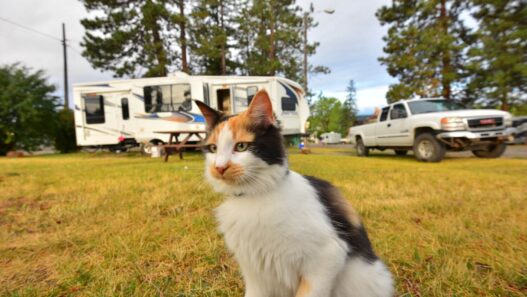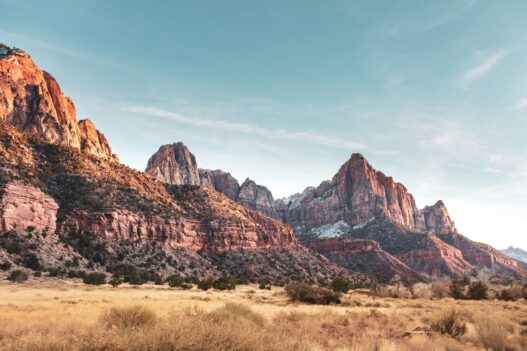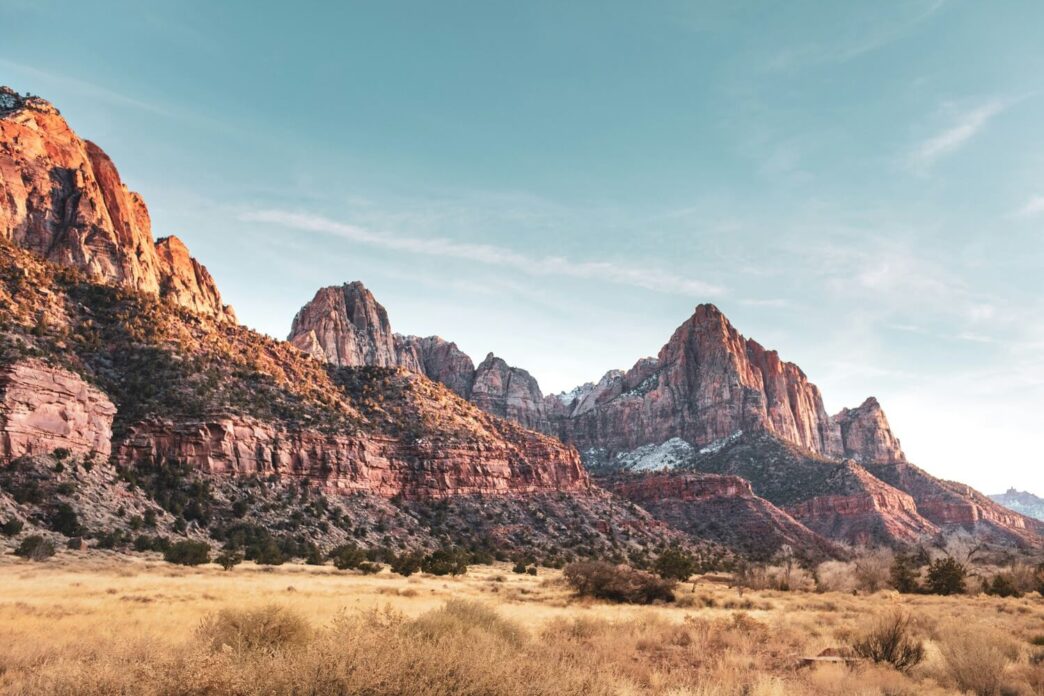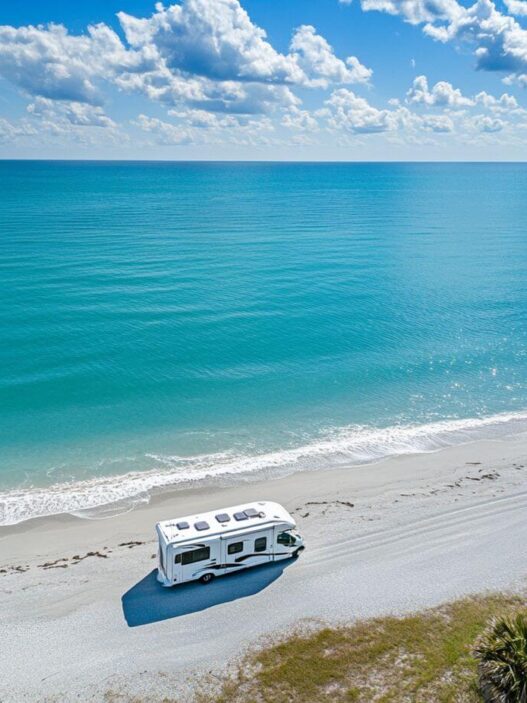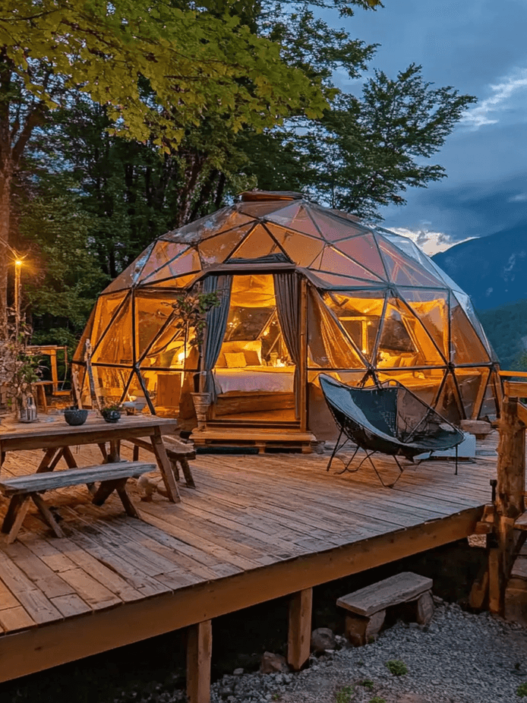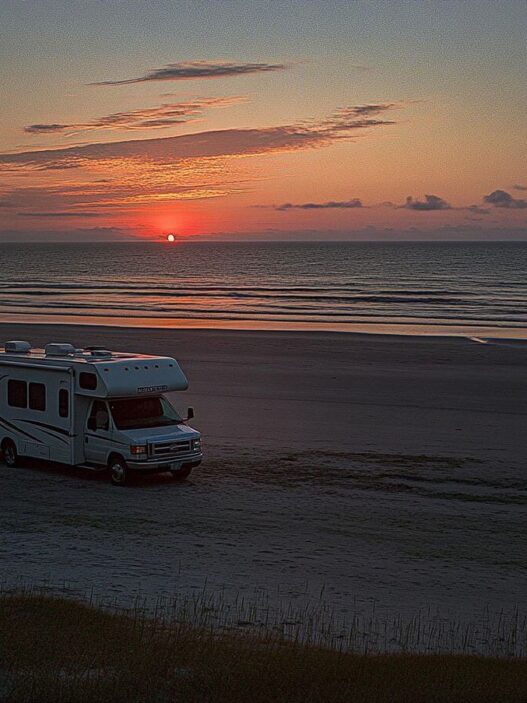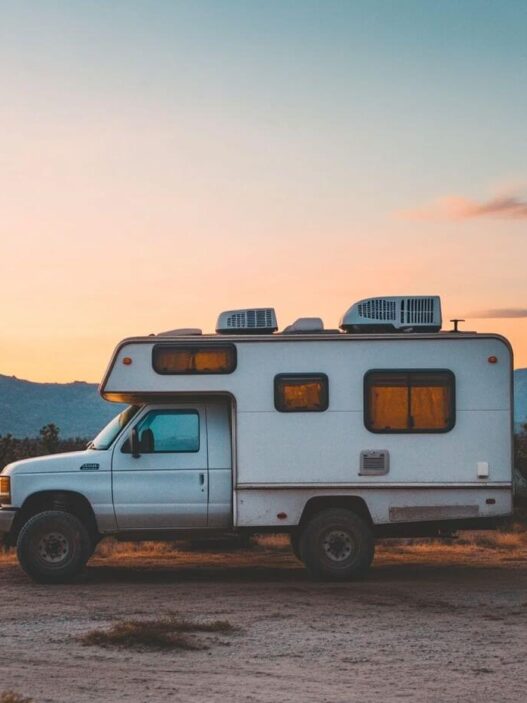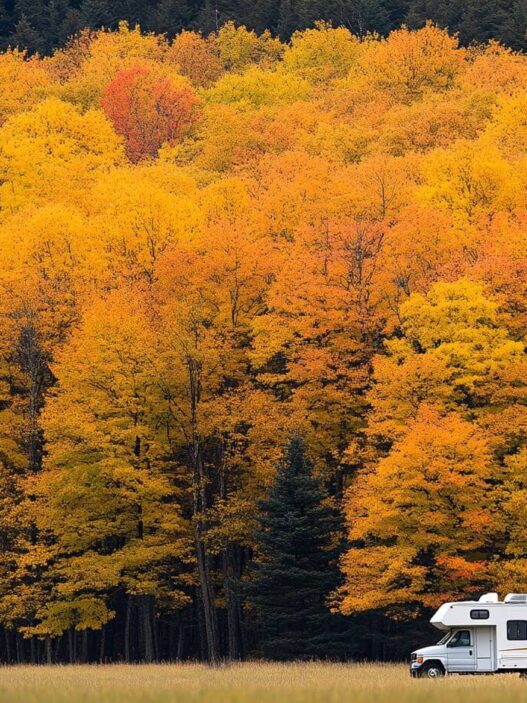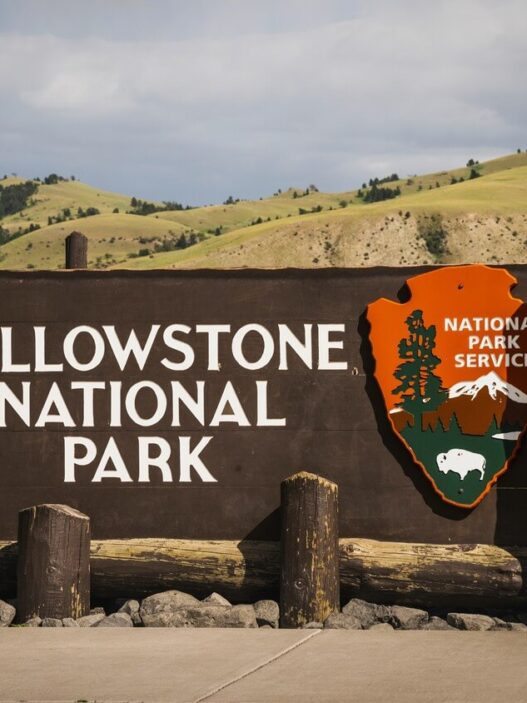Ever wonder why photographers and nature lovers wake up before dawn and haul camping gear into the wilderness? This list reveals some of America’s most visually stunning camping destinations that reward overnight visitors with views day-trippers never experience.
From Hawaii’s volcanic wonders to Michigan’s cloud-mirrored lakes and Alaska’s mountain majesty, these spots transform camping into a front-row seat for nature’s grandest displays.
1. Haleakala National Park, Hawaii
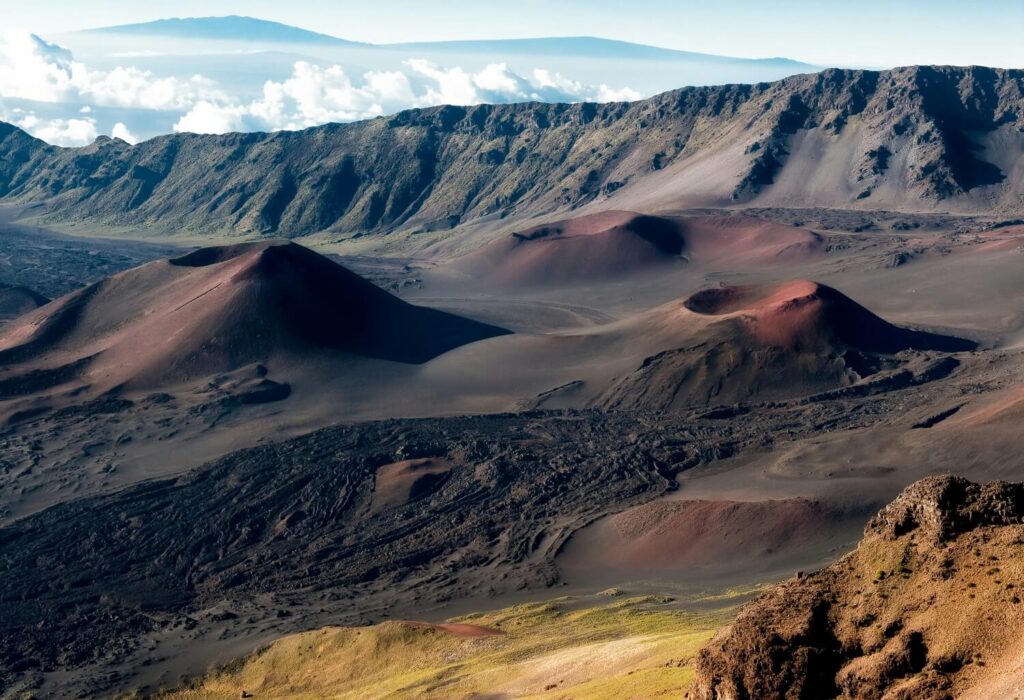
Camping in Haleakala National Park provides visitors the rare opportunity to experience one of Hawaii’s most dramatic landscapes without the crowds. The park stretches from the 10,023-foot summit of Haleakala (meaning “House of the Sun” in Hawaiian) down to the Kipahulu coast, providing diverse ecosystems and viewpoints that change dramatically with elevation.
The most breathtaking views come from the wilderness campsites of Holua and Paliku, which are accessible only by trail. Holua campsite sits at 6,940 feet in the shrubland near Ko’olau Gap, offering stunning views of the crater landscape. Visitors staying at Hōlua can enjoy day hikes into the central Wilderness Area where the landscape supports a native shrubland that colonizes the lava flows.
For those seeking coastal views, the Kipahulu Campground provides an entirely different but equally magnificent experience. This site is located just a short walk from the Oheo Gulch (also known as “Seven Sacred Pools”), with stunning coastal views alongside a lovely series of freshwater pools and waterfalls for hiking. This combination of ocean panoramas and lush tropical vegetation creates a visual feast unlike anywhere else in the United States.
Campers who brave overnight stays at Haleakala are rewarded with what many consider the ultimate prize: According to reviewers, both tent areas provide wonderful opportunities for night sky viewing in what’s considered one of the quietest natural places on earth. Away from city lights, the stars appear close enough to touch, providing a celestial show that day visitors simply cannot experience.
2. Crater Lake National Park, Oregon
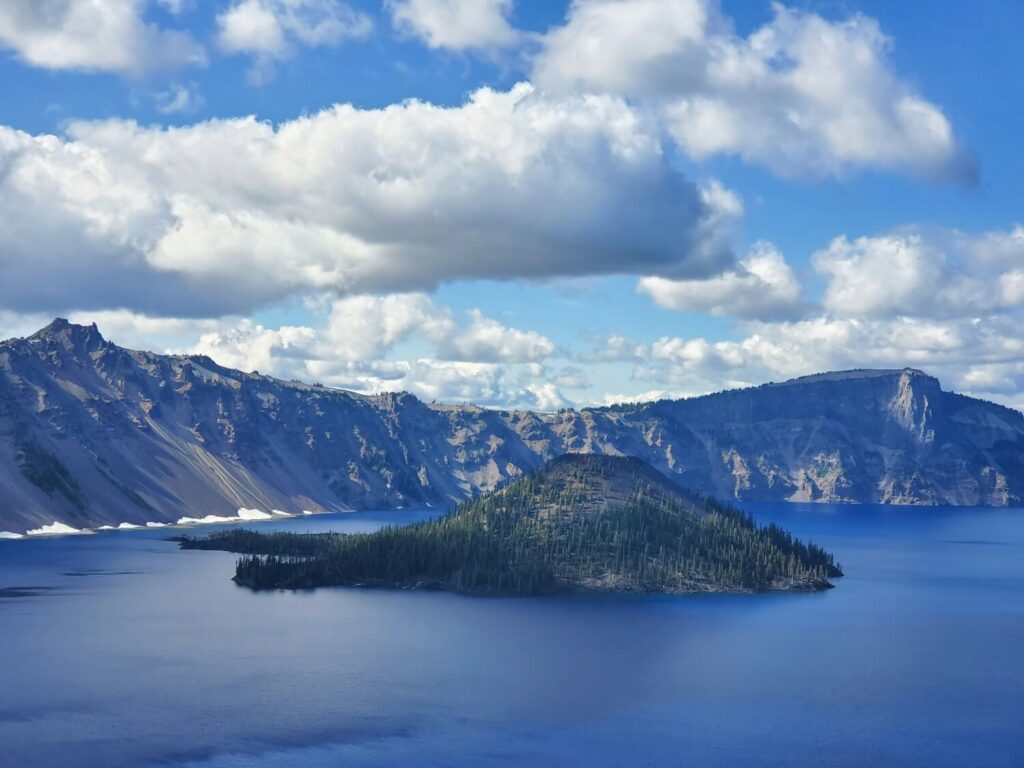
The deep blue waters of Crater Lake, formed from a collapsed volcano nearly 8,000 years ago, create one of the most visually striking landscapes in America. Scientists marvel at its purity. Fed by rain and snow, it’s the deepest lake in the USA and one of the most pristine on Earth. This sapphire jewel nestled within the rugged Cascade Mountain Range provides a perfect backdrop for campers seeking incredible views.
The Mazama Village Campground, located just over 6 miles south of Crater Lake’s Rim Village, serves as the perfect basecamp for exploring the park. While the campground itself is set in forest, the Rim Village is located six miles north with majestic views of the lake. The historic 33-mile Rim Drive circles Crater Lake with views from 30 overlooks. This positioning means campers can easily access numerous vantage points that showcase the lake from different angles throughout the day.
What makes camping at Crater Lake truly special is the opportunity to experience the lake during different light conditions. Many photographers recommend catching the sunrise from the rim when the lake often sits beneath a layer of morning mist. This creates an ethereal scene as the sun’s rays gradually illuminate the caldera. Evening brings equally dramatic lighting as shadows lengthen across the caldera walls and the blue water deepens in color.
For those seeking a more secluded experience with stellar views, dispersed camping in the surrounding national forest lands provides opportunities to camp with fewer crowds while still within striking distance of the park’s highlights. Campers can find multiple spots that provide breathtaking views and ample space for relaxation, with wide-open skies that allow for stunning stargazing.
3. Lake of the Clouds, Porcupine Mountains, Michigan
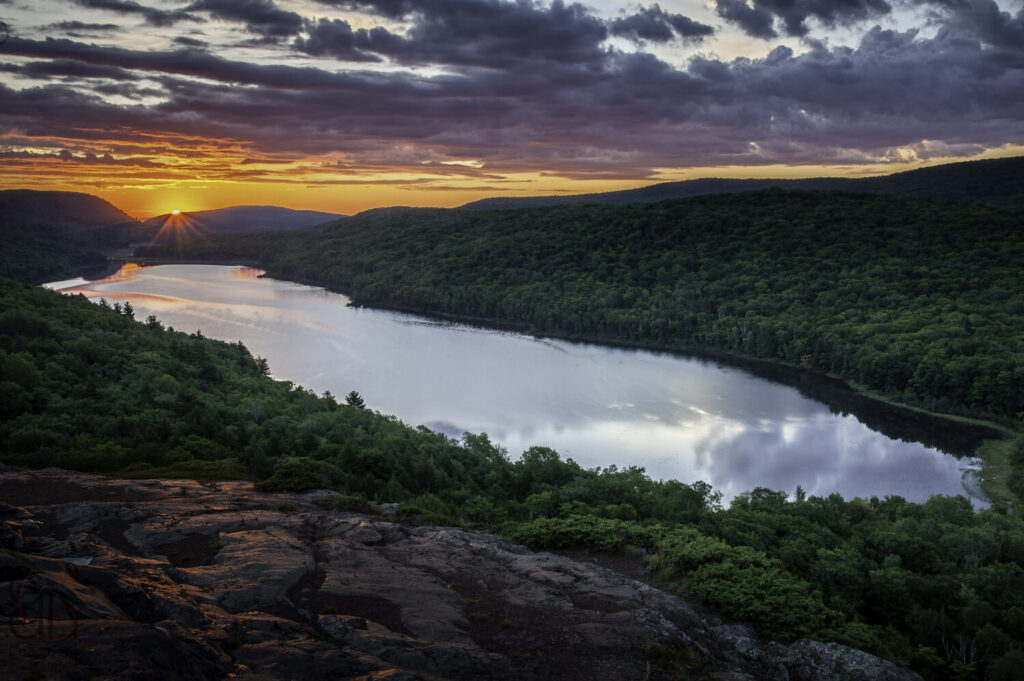
Michigan’s Upper Peninsula holds a scenic treasure in the Porcupine Mountains Wilderness State Park, where Lake of the Clouds offers some of the most spectacular views in the Midwest. Lake of the Clouds, surrounded by the silhouettes of the ancient Porcupine Mountains, appears as a blue gem amid thick forests. This creates a vista that truly lives up to its name.
What makes camping near Lake of the Clouds so visually rewarding is the dramatic seasonal changes that transform the landscape. In late spring and summer, the valley below bathes in the emerald green of old-growth forest. In the fall, the trees burst into a fiery palette of oranges, yellows, and reds. This makes it a perfect spot for repeat visits throughout the year, with each season offering its own unique visual spectacle.
For campers seeking the best views, the park presents several options. The Union Bay Campground features beachside sites with views of Lake Superior, while those wanting to immerse themselves deeper in the wilderness can explore backcountry camping options along the trails that connect to the Lake of the Clouds overlook. With almost 60,000 acres of forested mountains, woodlands, and waterfalls on the southern brim of Lake Superior, Porcupine Mountains Wilderness State Park creates an adventure whether you prefer a forest yurt, rustic cabin, modern RV site, or backcountry camping.
The Escarpment Trail, which winds along the ridge above Lake of the Clouds, provides campers with numerous vantage points to enjoy the scenery. The four-mile trail runs alongside a sheer cliff and is considered by many to be the most beautiful in the park. It skims over Cloud Peak and Cuyahoga Peak with views of the shimmering lake and valley floor spreading out below. Hikers who camp nearby can experience this trail at different times of day, watching how changing light transforms the landscape.
4. Gunnison National Forest, Colorado
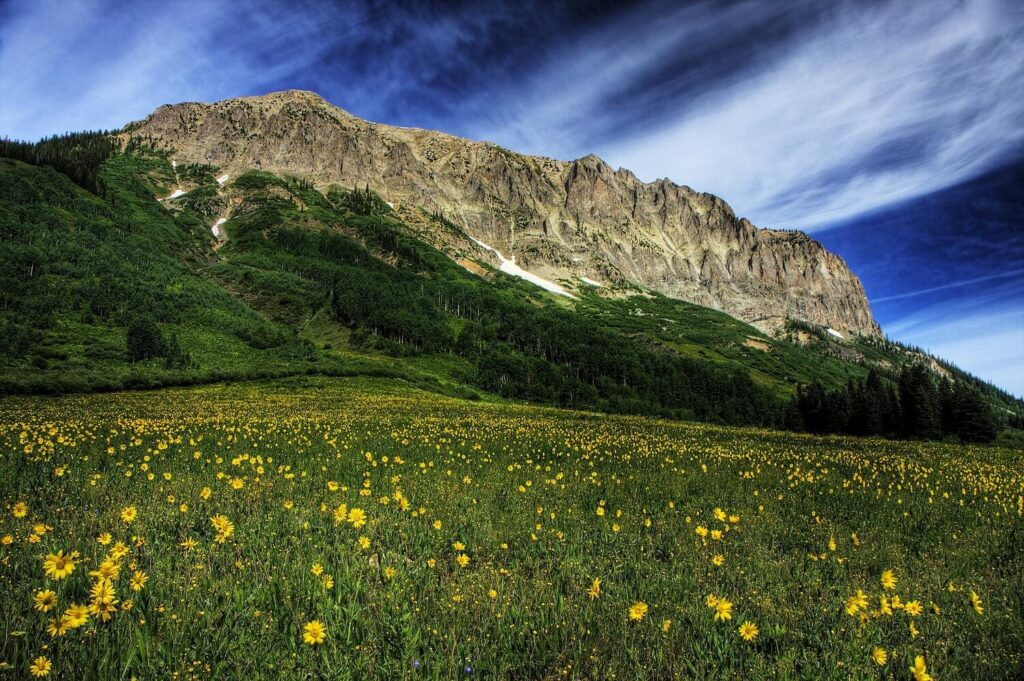
Gunnison National Forest spans over 1.6 million acres of diverse terrain in central Colorado, giving campers seemingly endless opportunities to wake up to breathtaking mountain panoramas. The forest consists of a variety of wilderness terrain, covering vast distances in secluded places like the West Elk Mountains, Raggeds Wilderness, Fossil Ridge, and the La Garita Wilderness.
The camping in Gunnison National Forest becomes visually spectacular because of the combination of alpine meadows, dense forests, pristine lakes, and towering peaks. These elements create dramatic backdrops in every direction. The forest’s elevation changes mean campers can choose views ranging from riverside settings to high alpine vistas above the treeline.
Kebler Pass provides one of the most scenic areas for camping, particularly in autumn. Kebler Pass is a stunning seasonal 2WD cruise from Crested Butte to Paonia. It becomes spectacular in the fall when the aspen groves turn brilliant gold. This area forms one of the largest connected aspen forests in North America. Campers who time their visit right are treated to a canopy of golden leaves that seems to glow from within when backlit by the sun.
For those seeking lakeside views, camping near Taylor Park Reservoir offers expansive vistas of water reflecting mountain peaks. Taylor Park Reservoir, the region’s second-largest body of water, features not only scenic views but recreational opportunities like fishing and non-motorized boating. These activities allow campers to experience the landscape from different perspectives.
The variety of camping options means visitors can tailor their experience to their preferred type of scenery. This might include views of granite outcroppings and wildflower-filled meadows at places like Soap Creek Dispersed Camping area or more established campgrounds with amenities but equally stunning surroundings.
5. Mount Rainier National Park, Washington
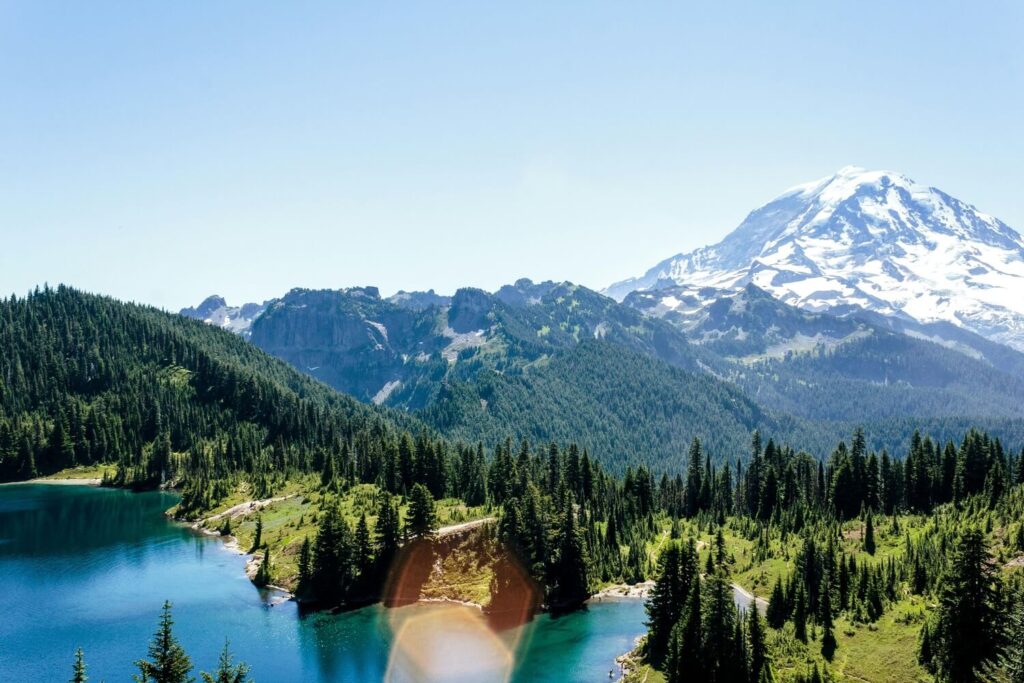
Mount Rainier National Park contains some of the most dramatic mountain scenery in the continental United States for campers. The 14,410-foot stratovolcano dominates the landscape, creating an imposing backdrop visible from virtually everywhere in the park. This iconic peak often hides behind clouds but reveals itself in magical moments that campers are perfectly positioned to capture.
The camping at Mount Rainier becomes visually remarkable because of the combination of alpine meadows, ancient forests, glaciers, and waterfalls that frame the mountain. In summer, vibrant wildflower meadows create a colorful foreground to the snow-capped peak, while fall brings golden hues to the landscape as vegetation changes color.
Campers at White River Campground on the northeast side of the park wake up to stunning views of Emmons Glacier, the largest glacier in the contiguous United States. The campground sits at 4,400 feet elevation, giving an intimate perspective of the mountain that feels both imposing and inspiring. Meanwhile, Cougar Rock Campground on the southwest side includes beautiful forest settings with the mountain visible through clearings.
For truly spectacular views, backcountry camps along the Wonderland Trail present vantage points few day-hikers ever experience. These sites feature varied perspectives of Mount Rainier from different elevations and angles. They showcase how light and weather transform the mountain throughout the day. Sunrise and sunset are particularly magical. During these times, alpenglow paints the glaciers in pink and gold hues that linger on the snow and ice.
6. Zion National Park, Utah
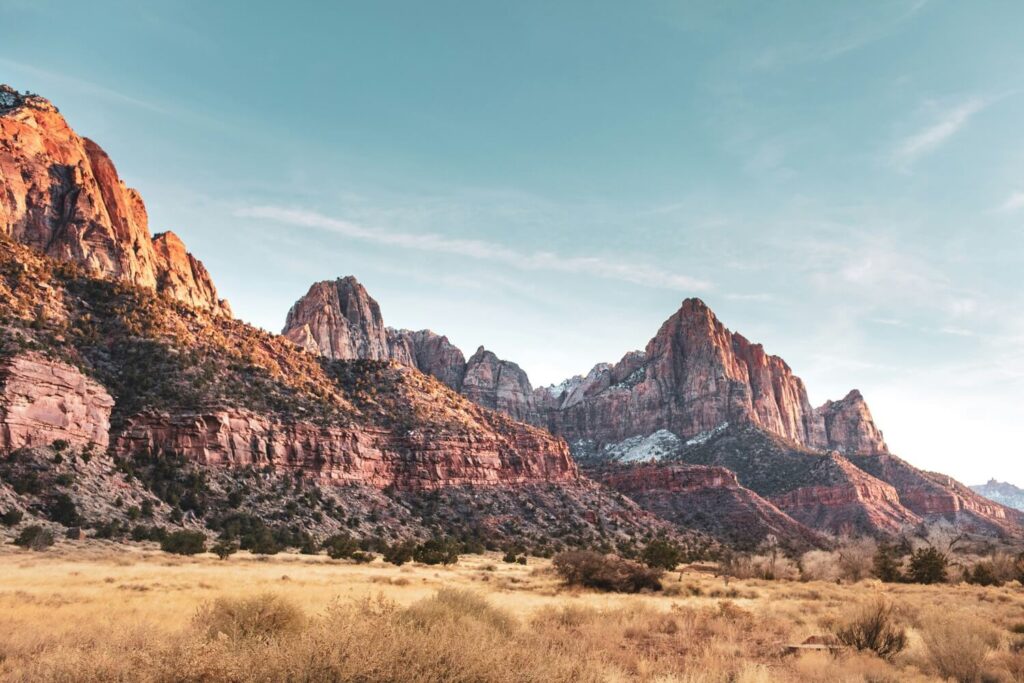
The towering sandstone cliffs of Zion National Park form a vertical landscape unlike any other camping destination in America. These massive walls rise thousands of feet from the canyon floor, changing color throughout the day as the sun moves across the sky. They shift from soft pinks at dawn to fiery reds at sunset and deep purples during twilight.
Watchman Campground, situated near the south entrance of the park, gives campers constant views of the formation it’s named after. The Watchman, a 6,545-foot sandstone mountain, catches the last light of day in spectacular fashion. This location provides campers front-row seats to one of the park’s most photographed scenes as the rock face glows orange and red at sunset.
South Campground contains similar vistas but adds views up into Zion Canyon, where pinnacles and rock formations create a dramatic skyline. Both campgrounds sit alongside the Virgin River. This adds the soothing sound of flowing water to the visual experience.
For more adventurous campers seeking unique perspectives, the park’s wilderness has permits available for backcountry camping on the West Rim and in other remote locations. These sites include rarely-seen views down into Zion Canyon from above, with panoramas that stretch for miles across the colorful rock formations. The higher elevation also allows spectacular stargazing. On clear nights, the Milky Way appears to rise directly from the silhouetted canyon walls.
7. Denali National Park, Alaska
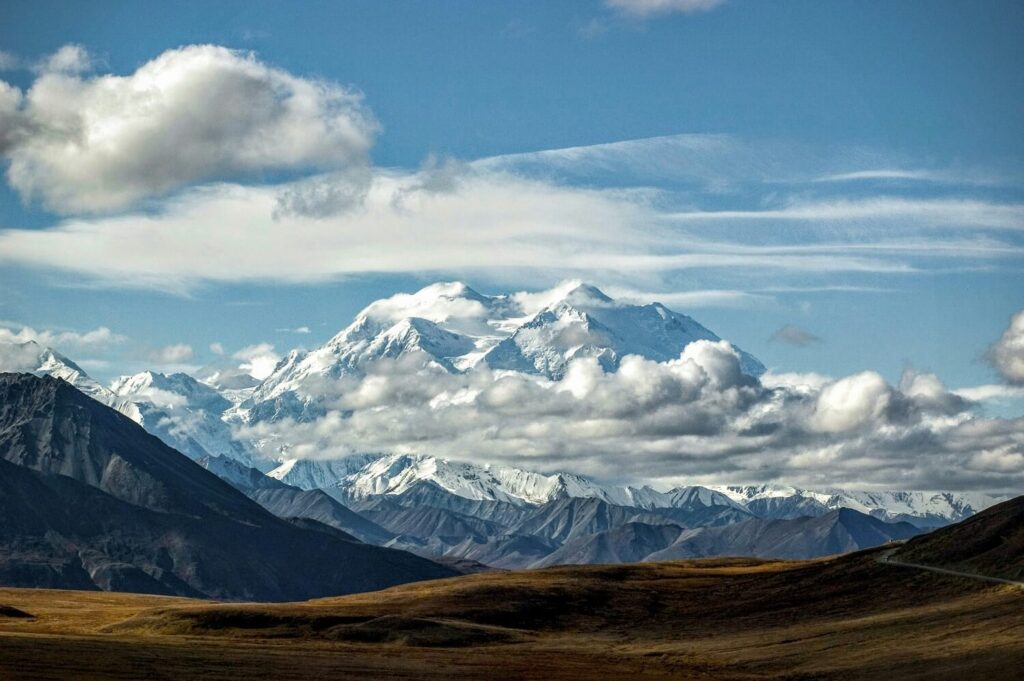
Camping in Denali National Park includes perhaps the most primal wilderness views in the United States, dominated by North America’s tallest peak. The mountain formerly known as Mt. McKinley soars to 20,310 feet. It creates its own weather systems and stands sentinel over the vast tundra and taiga landscapes that stretch in all directions.
The Denali views become truly exceptional because of the raw, untamed nature of the landscape and the sheer scale of everything in sight. Unlike more developed parks, Denali maintains a wild character with minimal infrastructure. This allows campers to feel genuinely immersed in the wilderness. The park’s single road penetrates deep into the backcountry, with several campgrounds presenting increasingly remote experiences the further in you travel.
Wonder Lake Campground, located 85 miles into the park, delivers what many consider the quintessential view of Denali. On clear days (which are admittedly rare but worth the wait), campers wake up to see the massive mountain reflected in the still waters of Wonder Lake. Miles of tundra stretch between the two. This classic Alaskan scene, often captured by photographers like Ansel Adams, feels even more special when experienced from a tent door.
The open tundra landscapes mean wildlife viewing adds another dimension to the scenic experience. Seeing a grizzly bear or wolf pack moving across the landscape with snow-capped peaks as a backdrop creates unforgettable visual memories that day visitors rarely experience. For those camping between late August and early April, the northern lights often dance overhead. This adds a celestial show to complement the already spectacular earthbound scenery.
8. Grand Teton National Park, Wyoming
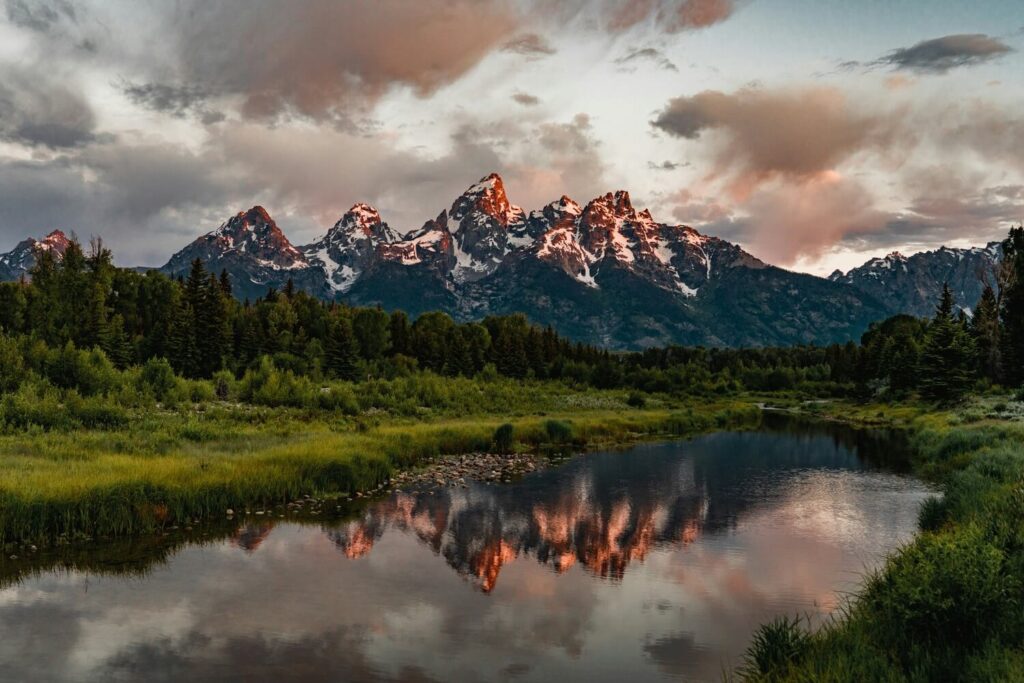
Few mountain ranges anywhere make such an immediate visual impact as the Tetons. They rise abruptly from the valley floor without foothills, creating a jagged skyline that seems almost too perfect to be real. Camping beneath these peaks displays views that have inspired generations of artists and photographers.
Jenny Lake Campground holds perhaps the most sought-after campsites in the park, with views of the Tetons reflected in the crystal-clear waters of the lake. Securing a spot here means waking to alpenglow on the peaks and enjoying sunset colors that deepen from gold to purple as evening approaches. The lake’s foreground adds a perfect compositional element to the mountain scenery.
Signal Mountain Campground shows a different perspective, set on a hillside overlooking Jackson Lake and the entire Teton Range. This elevated position creates panoramic vistas that allow campers to appreciate the scale and grandeur of the mountains. On clear mornings, the still waters of Jackson Lake create perfect reflections of the peaks. This doubles the visual impact.
For those seeking more solitude with their scenery, backcountry camping in places like Cascade Canyon puts visitors right in the heart of the range. Towering peaks rise on all sides and glacial streams tumble through boulder fields. These intimate, close-up views of the mountains reveal details invisible from the valley floor. You might see hanging glaciers, intricate rock patterns, and hidden waterfalls.





